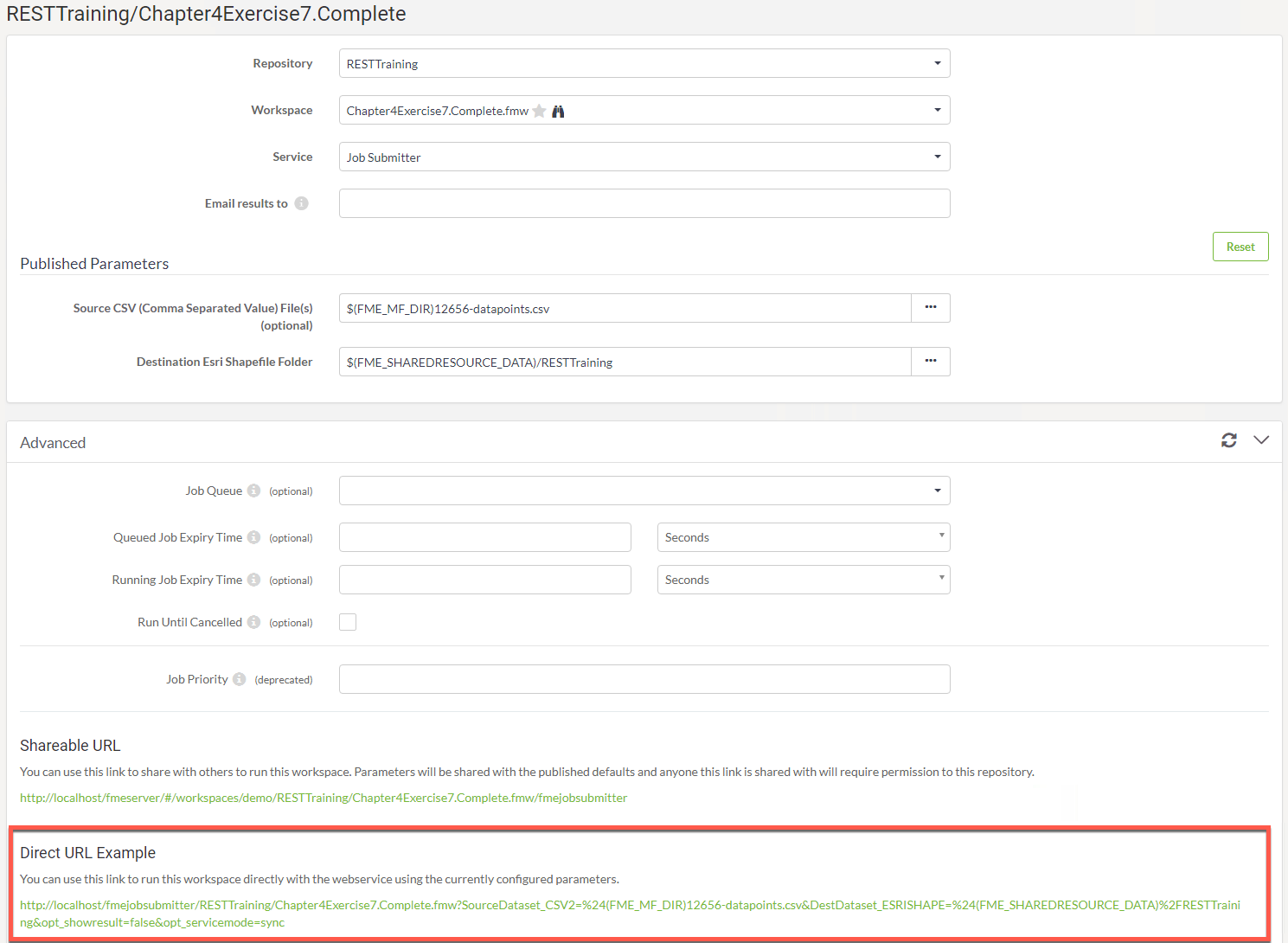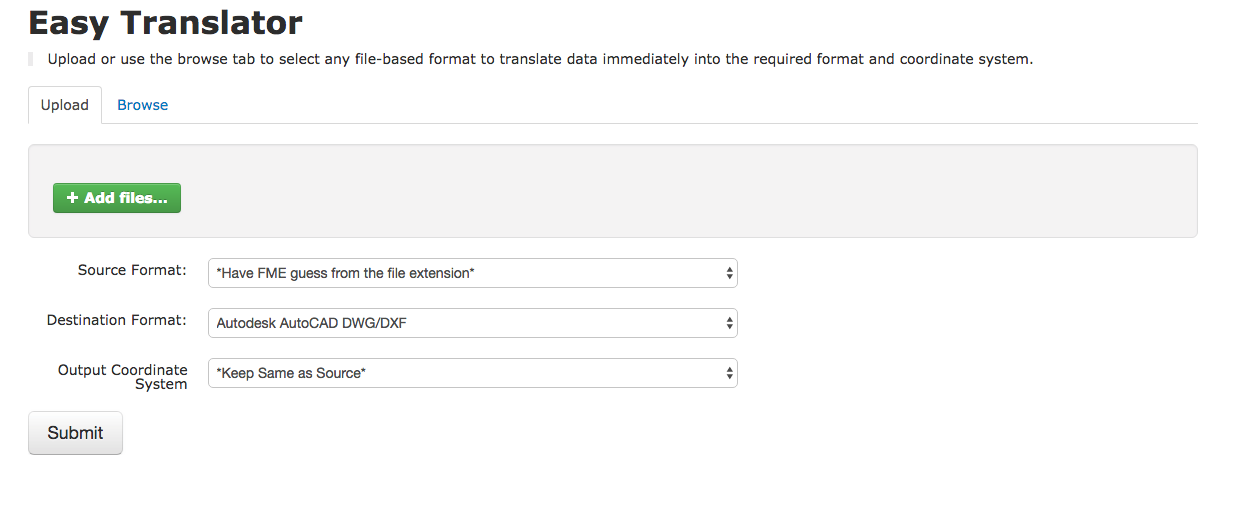Chapter 5- Web Services, Direct URLs, and the REST API
A Direct URL looks similar to the REST API Request URL; however, it exists outside of the REST API. To find an example of the Direct URL log into your server and located a workspace.
Open the advanced tab and scroll down until you find the Direct URL example:

The authentication process of the Direct URL is different from the REST API. With the Direct URL you may add a token to the end of the URL like this:
http://<yourServerHost>/fmejobsubmitter/<yourRepository>/<yourWorkspace>?<yourWorkpaceParameters>/token=<tokenValue>
Alternatively, the DirectURL will default to the permissions set on the guest user account. If your guest account has no permissions to run workspaces once you enter the Direct URL you may be asked to log in. If the guest account has permission, you may run the Direct URL without logging in.
Once you click the link, your job will run, and you will receive the following notification.

Like the REST API, the Direct URL can run a job synchronously and asynchronously. The job will automatically run synchronously. To run the job asynchronously enter an email in the section that says Email results to. By doing this the Direct URL will automatically be updated to run asynchronously. Once the job has completed an email will be sent.

Just like in the REST API there are parameters you may change in the Direct URL.
The following table was copied from the following manual on the Data Download Service. For full documentation see the Data Download Service documentation.
Direct URL Request Parameters
| Name | Value | Description |
|---|---|---|
| opt_responseformat | xml or json Default: xml | The language of the response. The text must be in lowercase |
| opt_geturl | The URL to a dataset | The URL of the source dataset to be used for transformation |
| opt_showresult | true or false | Whether the XML/JSON responses include the FME transformation result. The default value is true if this parameter is not present. |
| opt_servicemode | sync or async or schedule | Toggles between synchronous and asynchronous modes of the service. When jobs are submitted asynchronously (async), the response of submission success or failure is returned immediately. When set to synchronous (sync), the response is not returned until the job completes. Or, schedules a data download request to run at a specified start time (one-time only). If a schedule is specified, see below for additional parameters. |
| opt_requesteremail | Comma separated email addresses | Addresses to which the notification e-mail messages are sent. |
The Direct URL and REST API can be combined together in an application to utilize the best components of both. An example is in the Easy Translator demo.

Files are uploaded with the REST API; however, the job is run using a Direct URL.
This is a section of code for the dataUpload function from the FME REST API JavaScript Library. Please note it is not the full function but should provide some context to how the calls look like in a JavaScript function.
dataUpload : function(repository, workspace, files, jsid, callback) {
var url = buildURL('{{svr}}/fmedataupload/' + repository + '/' + workspace);
var token = getConfig('token');
url = url + '?token=' + token;
ajax(url, callback, 'POST', params);
The URL is built with the with the call we see in the REST API, then the token is added to the end of the URL. The URL is submitted with the POST method.
Luckily, this call and almost all of the calls within the FME Server REST API exist within the REST API JavaScript library, so the user does not have to write the functions. A user can successfully create an application by simply calling the functions already created.
The Direct URL used in a JavaScript function would look like this:
var submitUrl = BuildForm.host + '/fmedatadownload/' + BuildForm.repository + '/' + BuildForm.workspaceName + '?SourceDataset_GENERIC=' + files;
submitUrl = submitUrl + '&SourceFormat=' + sourceFormat;
submitUrl = submitUrl + '&DestinationFormat=' + destFormat;
submitUrl = submitUrl + '&COORDSYS_Dest=' + outputCoordSys + '&opt_responseformat=json';
Here the Direct URL is built, then the user would click the DirectURL to activate it.